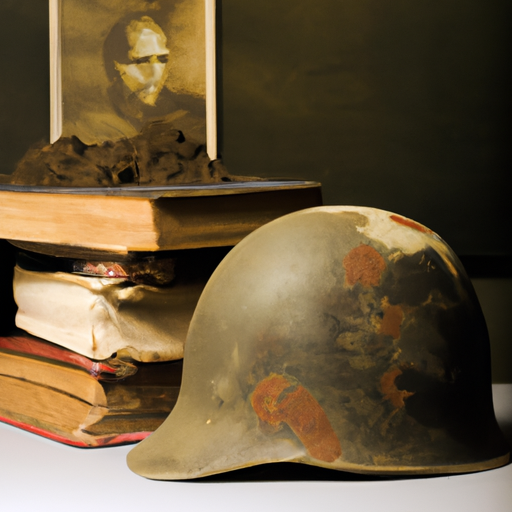World War I, often referred to as the Great War, was a global conflict that reshaped the political, social, and economic landscape of the early 20th century, leaving an indelible mark on history.
Origins and Causes of World War I
The origins of World War I lie in a complex web of political alliances, nationalistic fervor, and historical grievances. The assassination of Archduke Franz Ferdinand of Austria-Hungary in Sarajevo on June 28, 1914, is often cited as the immediate trigger for the war. However, beneath this assassination lay deep-seated causes that had been brewing for decades. The intricate system of alliances, such as the Triple Entente of France, Russia, and Britain, and the Triple Alliance of Germany, Austria-Hungary, and Italy, created a precarious balance of power. Nationalism also played a crucial role; countries were driven by a strong sense of identity and a desire for territorial expansion. Economic rivalries and imperial ambitions further strained relations between major powers. Militarization and the arms race added another layer of tension. The cumulative effect of these factors created a tinderbox ready to ignite, demonstrating how interconnected political and social dynamics can lead to large-scale conflict.
Major Battles and Fronts
World War I saw some of the most brutal and large-scale battles in history, fought on multiple fronts. The Western Front, stretching from the North Sea to the Swiss border, witnessed trench warfare at an unprecedented scale. Battles such as the Battle of the Somme, the Battle of Verdun, and the First Battle of Ypres resulted in staggering casualties for both the Allies and the Central Powers. The Eastern Front was characterized by more fluid movements, with battles like Tannenberg and the Brusilov Offensive demonstrating the strategic depth and complexity of the conflict. The Italian Front and the Gallipoli Campaign further highlighted the global nature of the war, involving multiple nations and continents. Each front presented unique challenges and atrocities, revealing the devastating human cost of modern warfare. Technological advancements such as machine guns, artillery, and chemical weapons added to the chaos, making World War I a war of unprecedented scale and horror.
Technological Innovations and Warfare
World War I was a significant turning point in military technology and warfare tactics. The war saw the advent of new machinery and innovative tactics that changed the way wars were fought. Tanks made their first appearance on the battlefield, breaking the deadlock of trench warfare with their ability to traverse difficult terrains and withstand small arms fire. The use of airplanes for reconnaissance and later for combat introduced a new dimension to warfare, while Zeppelins were used for strategic bombing. Chemical warfare, with the use of mustard gas and chlorine gas, introduced a new level of horror, causing indiscriminate suffering and long-term health impacts. Machine guns and heavy artillery became more lethal and accurate, resulting in high casualty rates. Submarine warfare, particularly by German U-boats, threatened naval supremacy and disrupted supply lines. These technological innovations not only influenced the strategies and outcomes of World War I but also set the stage for future conflicts, underscoring the relentless march of military advancements.
Social and Economic Impact
The societal and economic impacts of World War I were profound and widespread. The war led to the mobilization of entire societies, with men conscripted to fight and women taking on roles traditionally held by men, such as working in factories and serving as nurses. This shift challenged existing social norms and paved the way for greater gender equality, exemplified by women&8217;s suffrage movements gaining momentum in many countries after the war. Economically, the war drained national treasuries, leading to massive debt and economic instability. The Treaty of Versailles imposed harsh reparations on Germany, contributing to economic woes and fostering resentment that would later contribute to the rise of Adolf Hitler. In the United States, the war led to the brief economic boom followed by the Great Depression. Socially, the war left deep psychological scars, with millions suffering from what was then known as shell shock, now recognized as post-traumatic stress disorder (PTSD). The global influenza pandemic of 1918, which spread rapidly due to wartime conditions, further compounded the human suffering.
Long-term Consequences and Legacy
The long-term consequences of World War I were far-reaching, shaping the course of the 20th century and beyond. Politically, the war led to the fall of empires, including the Austro-Hungarian, Ottoman, German, and Russian empires, and the emergence of new nation-states, particularly in Eastern Europe and the Middle East. The Treaty of Versailles, with its punitive terms imposed on Germany, sowed the seeds of World War II by creating deep resentment and economic hardship. The war also gave rise to significant geopolitical changes; the United States emerged as a global power, while the League of Nations was established in an attempt to ensure future peace, although it ultimately failed to prevent another world war. Culturally, the war influenced literature, art, and philosophy, with movements such as Modernism reflecting the disillusionment and questioning of traditional values. The collective trauma and widespread devastation of World War I indelibly marked societies, leading to shifts in political thinking and the development of international relations frameworks aimed at preventing such a catastrophe from happening again. The legacy of World War I serves as a somber reminder of the destructive potential of human conflict and the enduring hope for peace.
